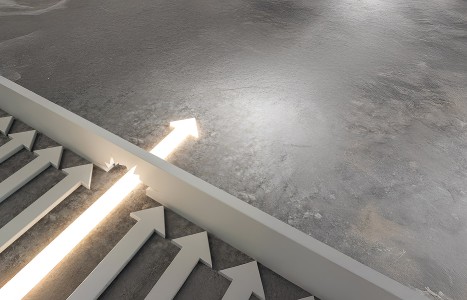You became a chiropractor to serve people, not an insurance company. You deserve to run a business that aligns with your values, supports your family and lights you up. Cash-based care isn’t just a pricing model – it’s a philosophy rooted in freedom, trust and respect for your patients and for yourself. Here's why - and how - to do it.
American Back Society 2004, Part I
The American Back Society (ABS), the most interdisciplinary of all back societies, met in Las Vegas Dec. 8-11, 2004. It is fair to say that ABS attendance, which fell somewhat after 9/11, is back to what it should be for this truly useful meeting.
Foster on the Bulging Disc
The ABS has always struck a nice balance between "back to basics" and "cutting edge" types of presentations, and this conference was no exception. Mark Foster's discussion of the bulging disc was of the back-to-basics genre, but with a difference: Beyond clarifying the lexicon associated with the injured intervertebral disc, he described how the doctor's choice of words from that lexicon impacts patients.
Patients, after all, don't like being told they have a "herniated disc" because it scares them, even though the long-term outlook is good with conservative care. Patients may cower before the high-tech authority of an MRI, replete with red arrows pointing toward gray blobs that an impassive and usually hurried doctor declares abnormal - perhaps forgetting to mention that about one-third of similarly aged asymptomatic people have similar bulges on their MRIs.
Patients have a logical and understandable expectation that the doctor will tell them what is wrong with them, but doctors don't always pay enough attention to the exact words in providing a diagnosis. When it comes to diagnosis, familiar words may soothe, when in fact, the condition is serious, like the word "arthritis." A patient who feared having cancer may take comfort in being told it's just arthritis, but usually has no idea what arthritis actually is, and that some forms of it have a bad prognosis. At the other extreme, familiar and especially unfamiliar terms may terrify, as when a back patient expecting to learn he has arthritis is informed he has a "dessicated bulging disc" (ouch!), even though the long-term outcome is good.
Although Mark Foster did not actually use these words, his comments on the normal aging of intervertebral discs reminded me of a comment I often make to patients about back doctors, medical or chiropractic, who misinterpret routine radiographic findings like small bone spurs or minor disc thinning: It's like a dermatologist, noting wrinkles on the face of a middle-aged patient, declaring that "the next 24 hours would be critical."
According to Foster, most patient with bulging discs do not have nerve pressure, and more often than not, the back pain results from inflammation related to the bulge itself, not a neurological situation. The doctor should emphasize that the long-term outlook is good due to the stabilizing effect of aging; unless, of course, there is associated spinal stenosis. "The cascade of spinal degeneration leads to autostabilization, which is better given time, unless complicated by stenosis." Even when the short-term pain is severe, that does not exclude complete resolution, and full return to work and customary activities of daily life. As for imaging studies, we must not forget that disability is not necessarily determined by objective signs.
Kuchera on Somatic Predictors of Chronic Low Back Pain
When I first began attending ABS meetings, it was usually Philip Greenman who represented the osteopathic profession. In the past several meetings, that task has been dispatched by Michael Kuchera, of the Philadelphia College of Osteopathic Medicine. This professor always tells us when his comments are evidence-based, as compared with having other sources, such as: (a) personal observation, (b) traditional osteopathic theory, (c) neuromusculoskeletal modeling, or (d) basic science considerations.
At this meeting, Kuchera focused on physical examination findings that predict and characterize back pain. He spoke very quickly and covered a lot of territory, but I will try to capture the highlights:
- Pain quality: Dermatomal pain is dysesthetic (burning), myotomal pain is cramping, and sclerotogenis pain is deep and toothache-like.
- TART: This is an acronym that stands for Tissue texture changes, Asymmetry, Restriction of motion, and Tenderness. (The comparison to the PARTS acronym in chiropractic {Bergmann, 1993 #66} is obvious.) Degenhardt, et al., found good interexaminer reliability in assessing the components of TART following consensus training.
- Greenman's "dirty half-dozen" reasons for recalcitrant low back pain: pubic shear, sacral shear, innominate shear, ilio-psoas syndrome, anatomic short-leg syndrome, and non-neutral lumbopelvic syndrome. (Readers should note that Greenman's study was unblinded, and very suspect in not having addressed validity issues. I can find no other references supporting Greenman's often-mentioned "dirty dozen.")
- Trigger-point palpation: Sciotti, et al., found that for the trapezius muscle, two trained examiners can reliably localize latent TrPs with a precision similar to the physical dimensions of the clinician's own fingertips
During his hands-on afternoon workshop, Kuchera demonstrated examination procedures that identify somatic dysfunction. Like other instances in which I have seen non-chiropractors examining the spine and pelvis, I had this weird feeling that it all seemed very familiar and yet very foreign at the same time. It has less to do with exam procedures, per se, and more to do with jargon and points of emphasis. All the professions that address the neuromusculoskeletal system (osteopathy, physical therapy, chiropractic, orthopedic medicine) share a certain body of procedures, such as eliciting deep tendon reflexes; but each develops profession-specific "special" tests that are often quite proprietary. What we are left with is a separated-from-birth feeling, as if all these professions had a common ancestor, or at least experienced parallel evolution, but remain somewhat divergent. For example, Kuchera's "sphinx test" sure did resemble a palpatory procedure I use to determine sacral rotation, but I am not sure the test rationale and interpretation would be identical to mine. I do find it most interesting that DCs, DOs, PTs, and even some MDs agree it is worth investigating whether the sacrum is rotated.
Saunders on Nonsurgical Management of the Herniated Disc
Listening to physiotherapist H.D. Saunders discuss the nonsurgical treatment of herniated disc and other nerve root syndromes, one is reminded just how much the teachings of Robin McKenzie rule the non-chiropractic world of conservative therapy. (Many of my previous columns about ABS meetings discuss this work, and are retrievable at www.chiroweb.com). According to Saunders, the lynchpins for conservative care include spinal traction/decompression, exercise, posture correction, stabilization, and patient education. Far too many patients are receiving surgery before such nonoperative care has been attempted, at least on a trial basis. The natural history of herniated nucleus pulposus is quite favorable, with morphological improvement usually corresponding to (although lagging behind) symptomatic improvement.
In his afternoon workshop the next day, Saunders provided a detailed description of the protocols he uses to treat such cases. Among the several procedures discussed, I would like to draw attention to one in particular. Since the patient often presents in forward flexion, the immediate goal is to correct the posture using the McKenzie principle of directional preference. A position is determined, usually a combination of extension and side bending, that reduces the extent to which the leg pain radiates. Patients who do not exhibit this capacity for "centralization" of leg pain may have noncontained disc herniations, and may need traction. The traction, which Saunders says must be of adequate intensity, may be applied in flexion, but at some point, the treatment is going to have to include extension. When I asked Mr. Saunders if he ever applies traction in extension, since that did appear to be his end goal in treating severe cases, he said he did not. By comparison, Paulk and D.E. Harrison just published a case report in JMPT (Internet access only), of a disc herniation treated with a variety of modalities, including extension traction.
Resources
- Degenhardt BF, Snider KT, Johnson J, Snider E. Retention of interexaminer reliability in palpatory evaluation of the lumbar spine. Journal of the American Osteopathic Association 2002;102(8):439.
- Greenman P. Sacroiliac dysfunction in the failed low back pain syndrome. In: Vleeming A, Mooney V, Sniders C, Dorman T, editors. First Interdisciplinary World Congress on Low Back Pain and Its Relation to the Sacroiliac Joint. Rotterdam: Rotterdam: ECO; 1992. p. 329-359.
- Sciotti VM, Mittak VL, DiMarco L, Ford LM, Plezbert J, Santipadri E, et al. Clinical precision of myofascial trigger point location in the trapezius muscle. Pain 2001;93(3):259-66.
- Komori H, Shinomiya K, Nakai O, Yamaura I, Takeda S, Furuya K. The natural history of herniated nucleus pulposus with radiculopathy. Spine 1996;21(2):225-9.
- Paulk PG, Harrison DE. Management of a chronic lumbar disk herniation with Chiropractic Biophysics methods after failed chiropractic manipulative intervention. Journal of Manipulative and Physiological Therapeutics 2005;27(9):e15.
Dr. Robert Cooperstein, a professor at Palmer College of Chiropractic West, can be reached at www.chiroaccess.com, or by e-mail at cooperstein_r@palmer.edu.


